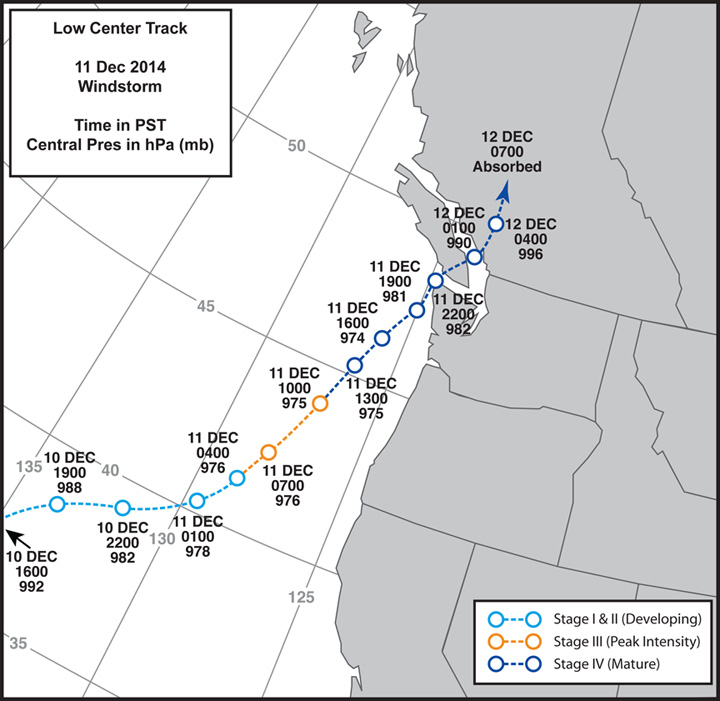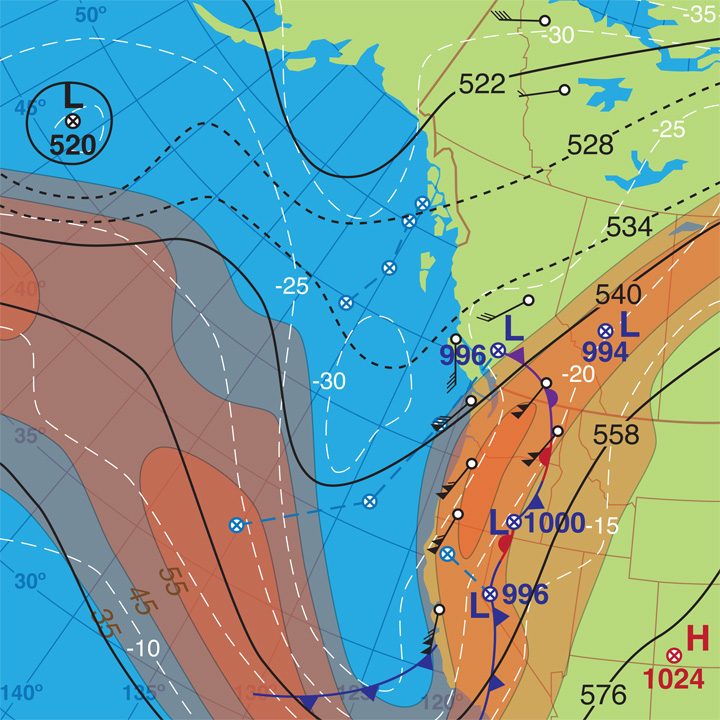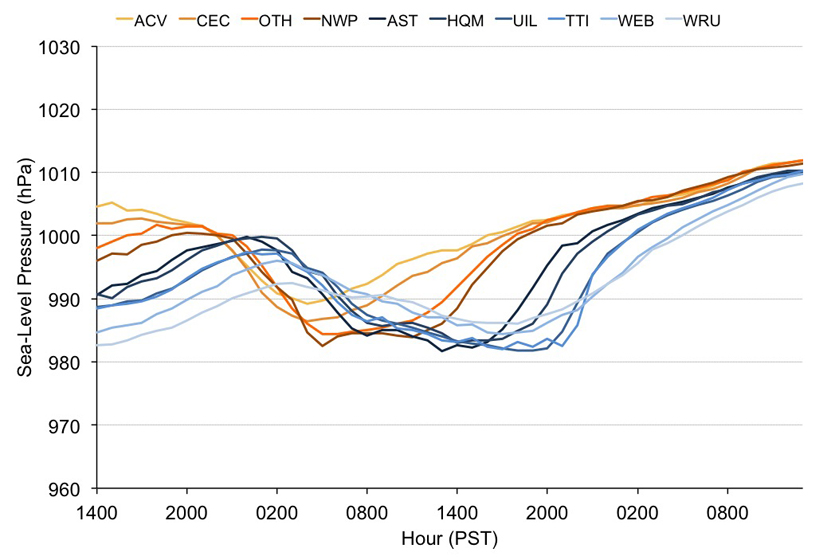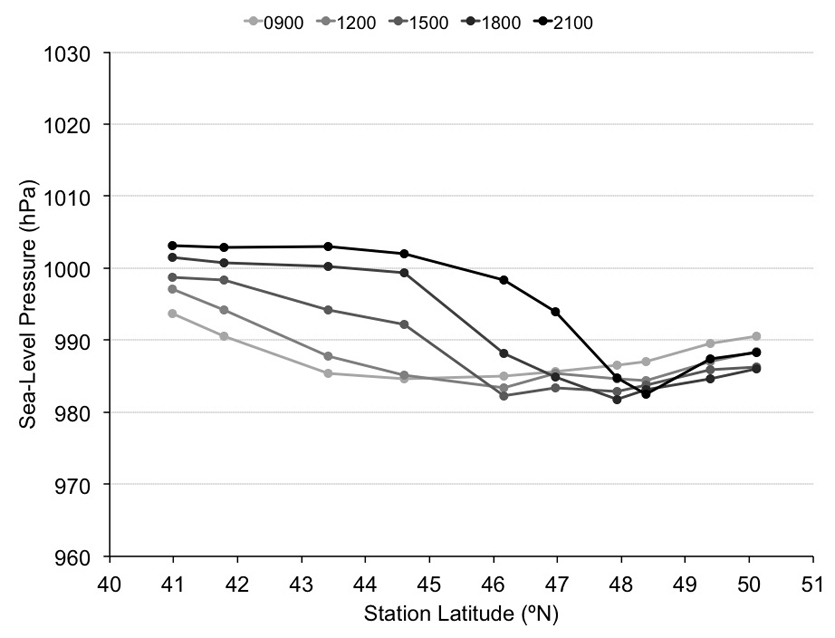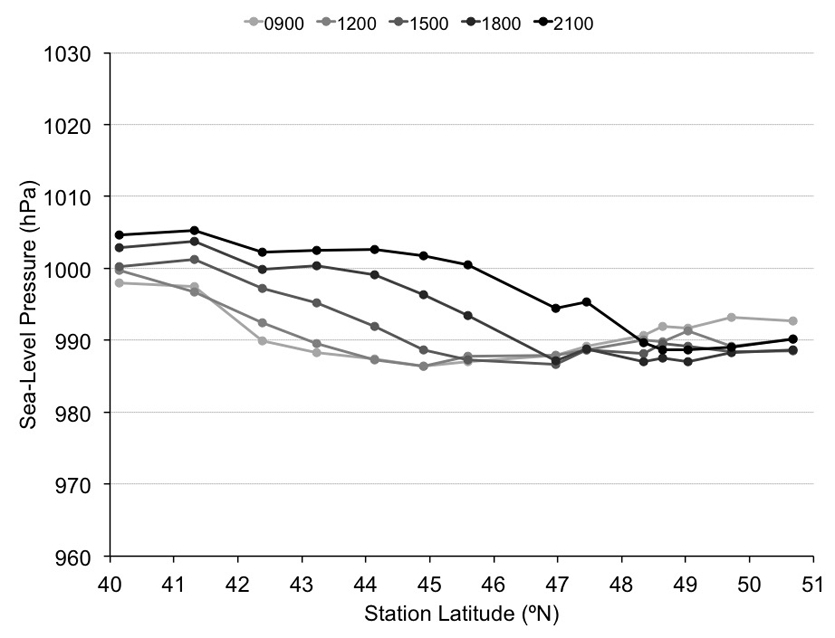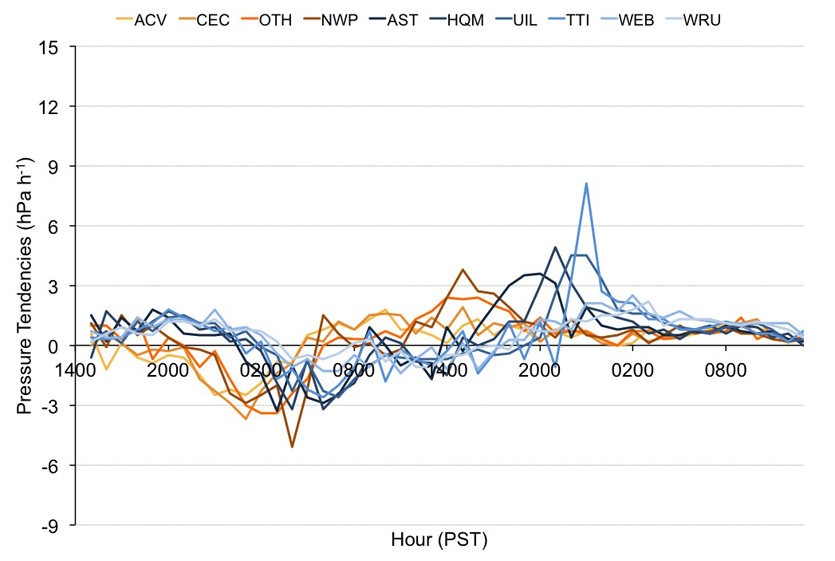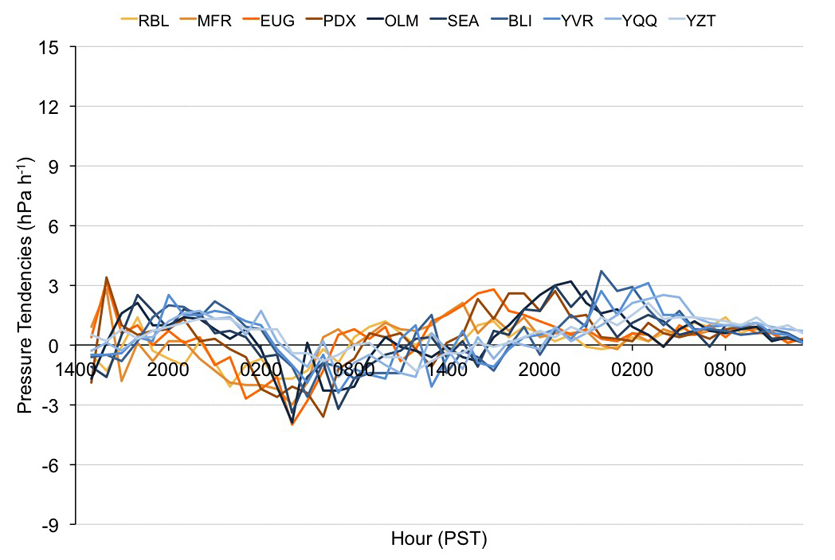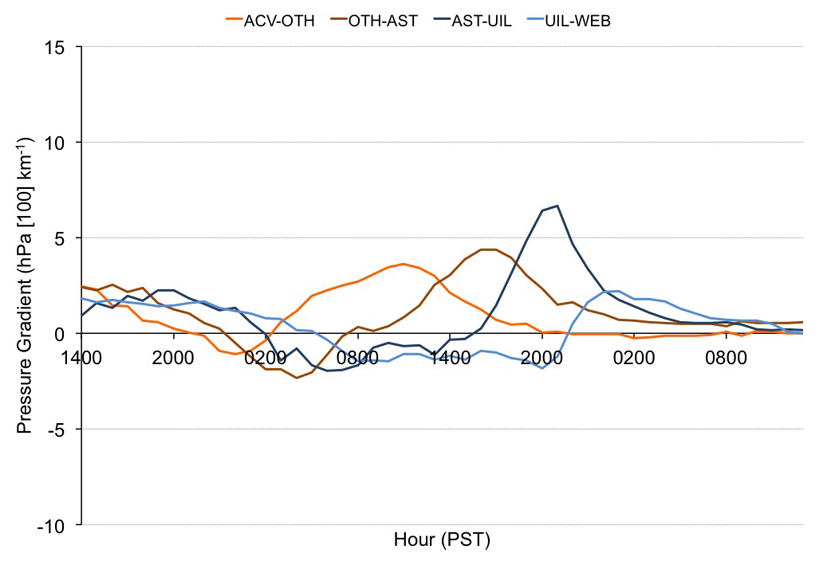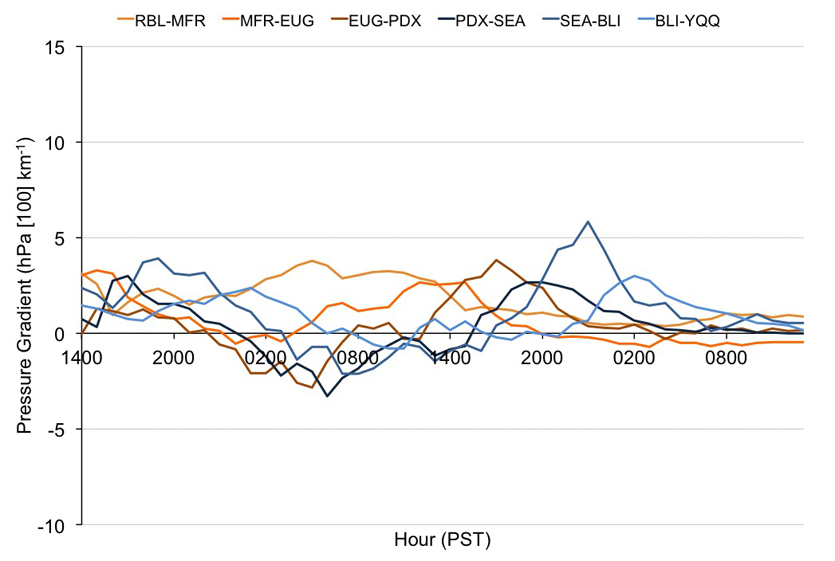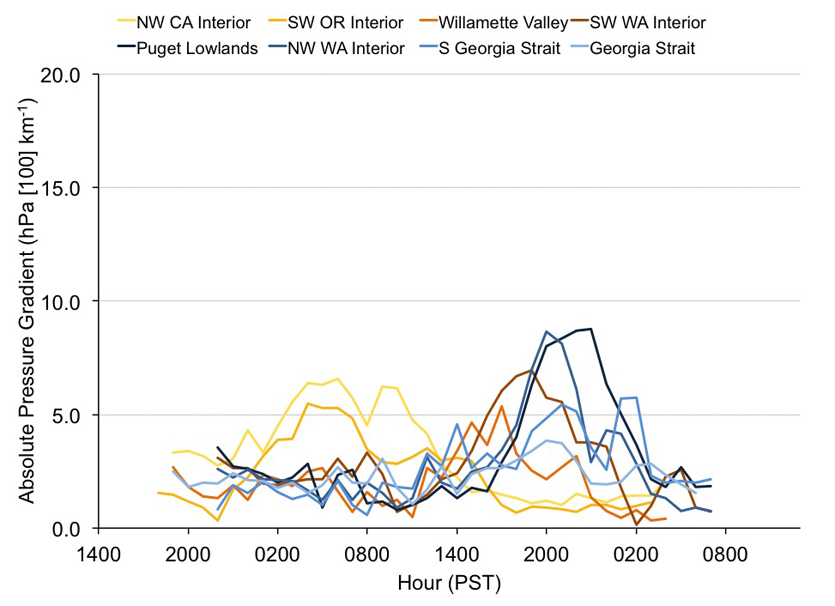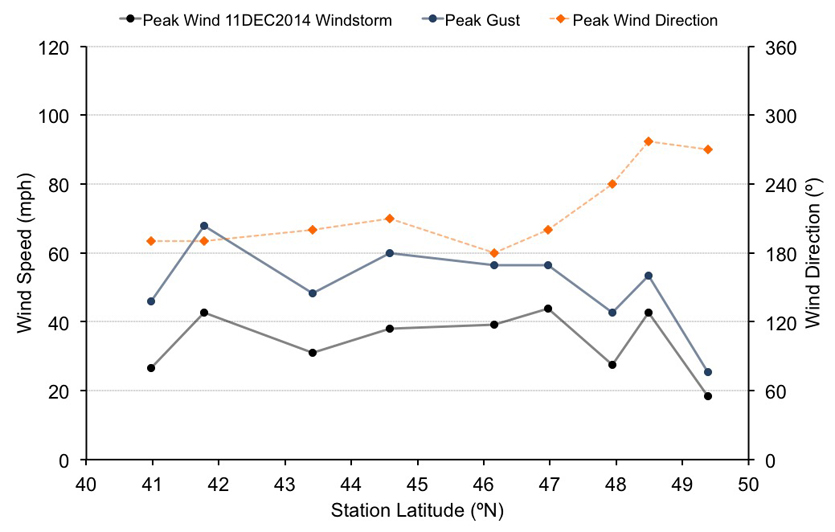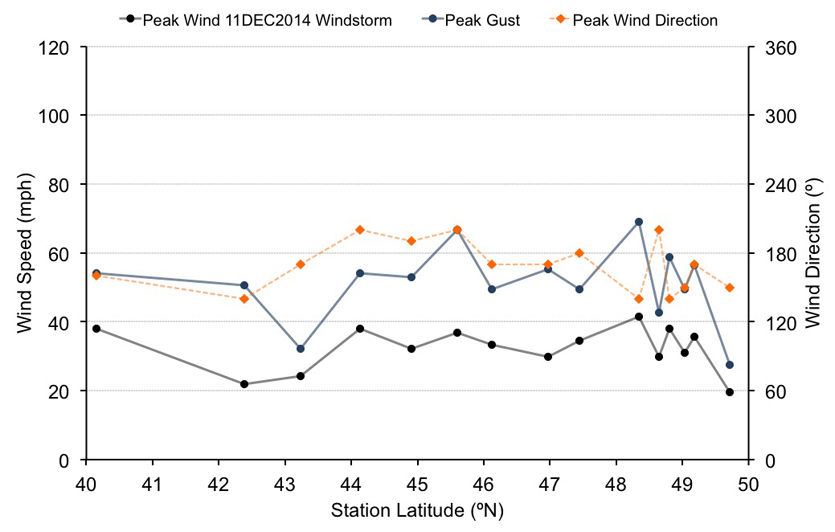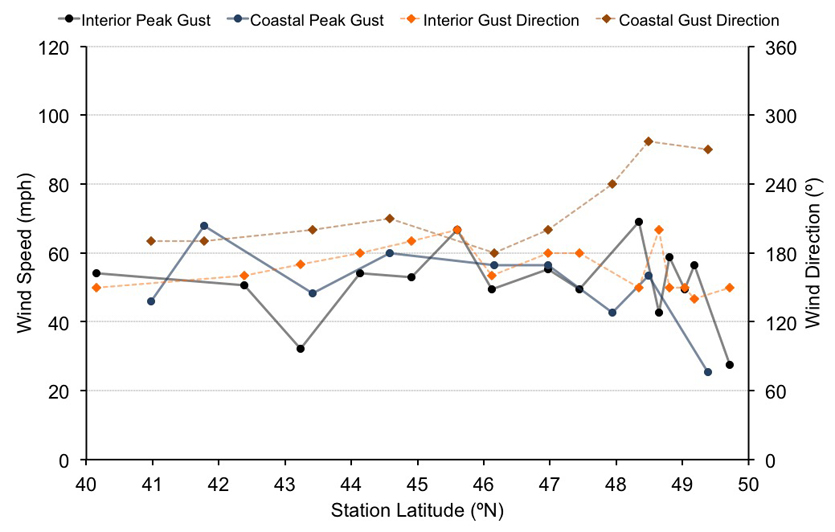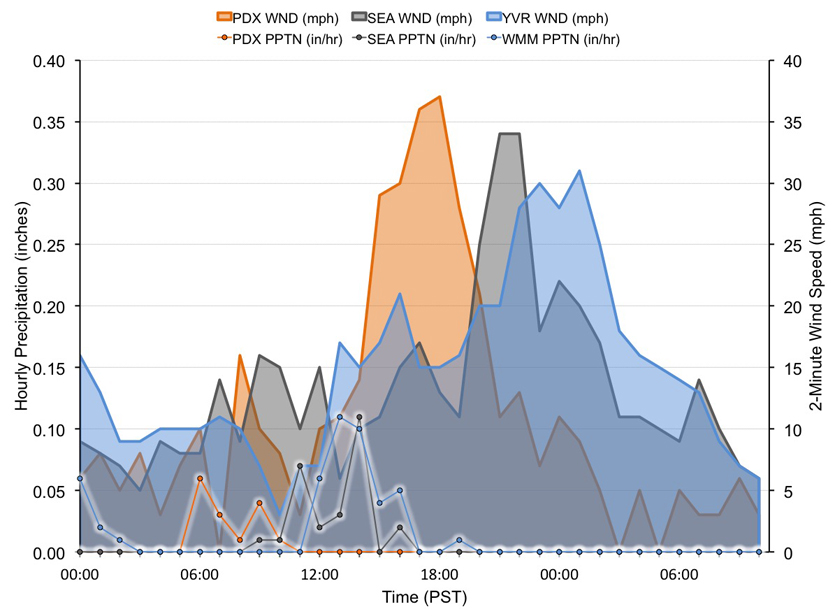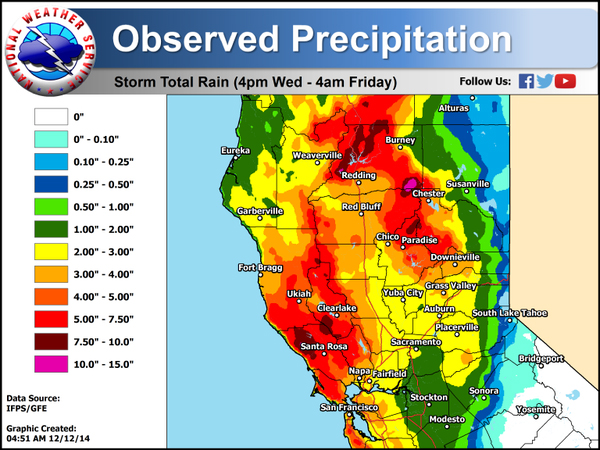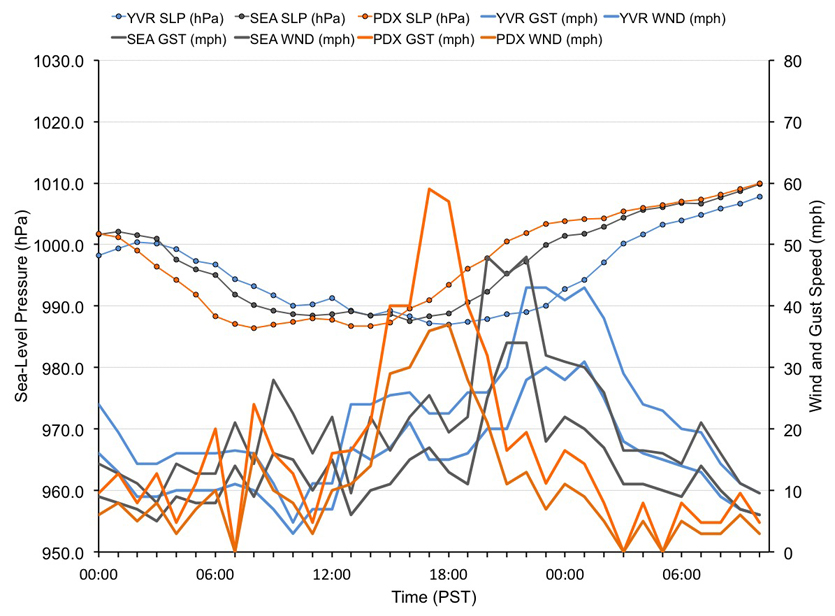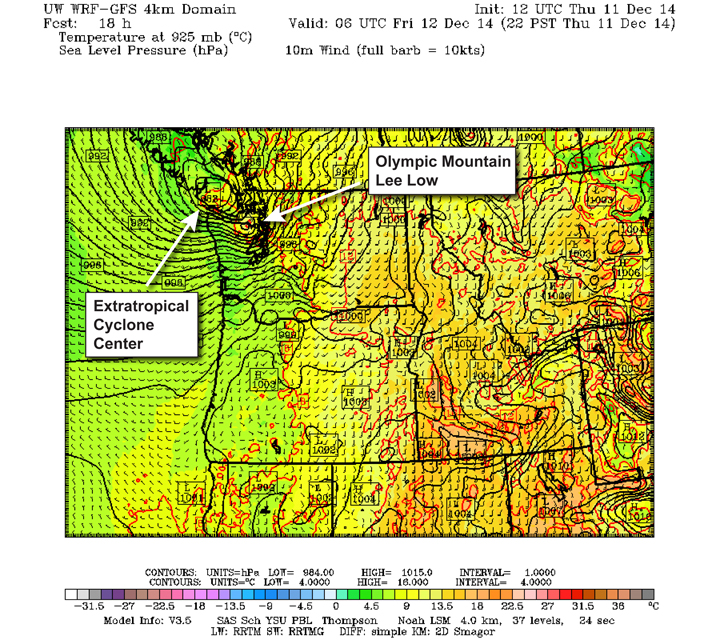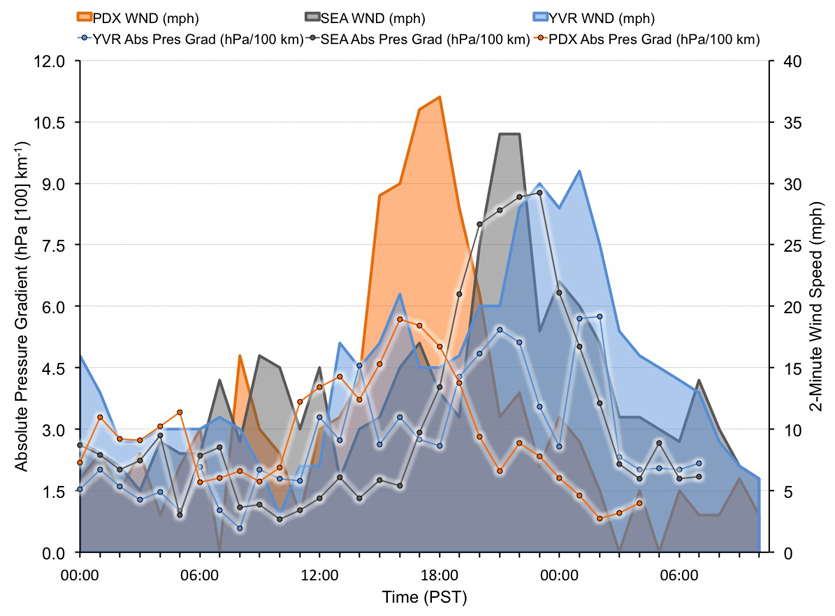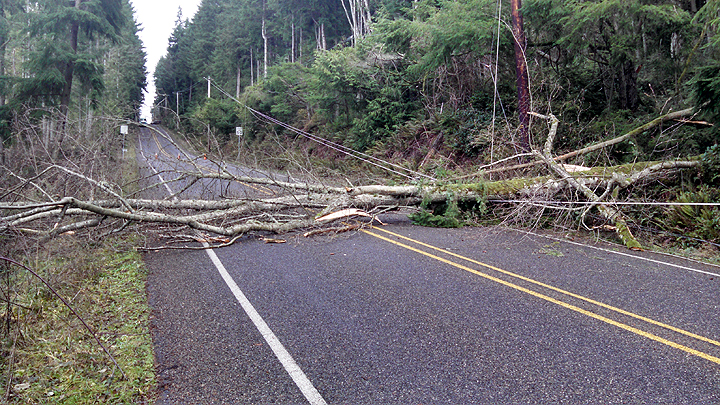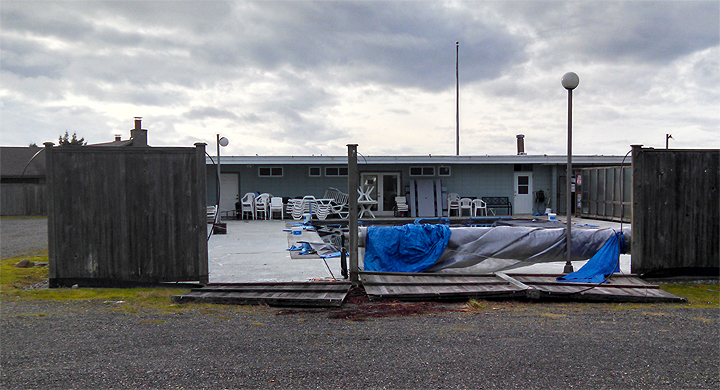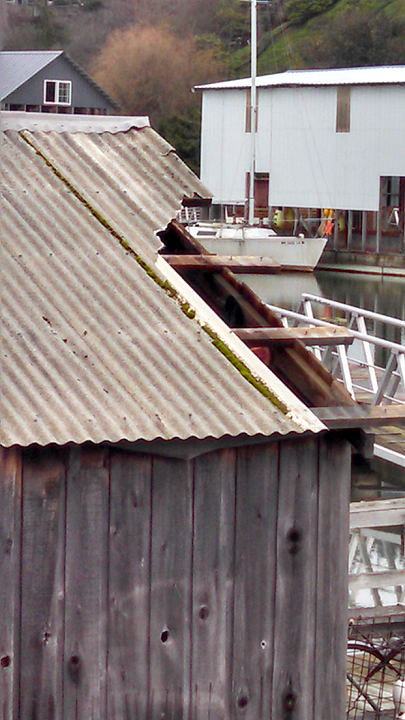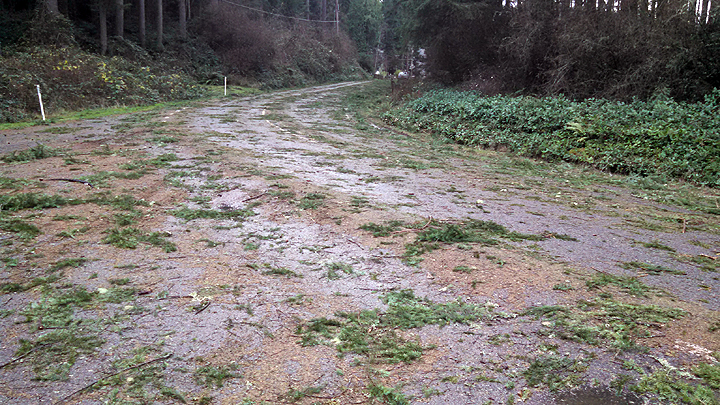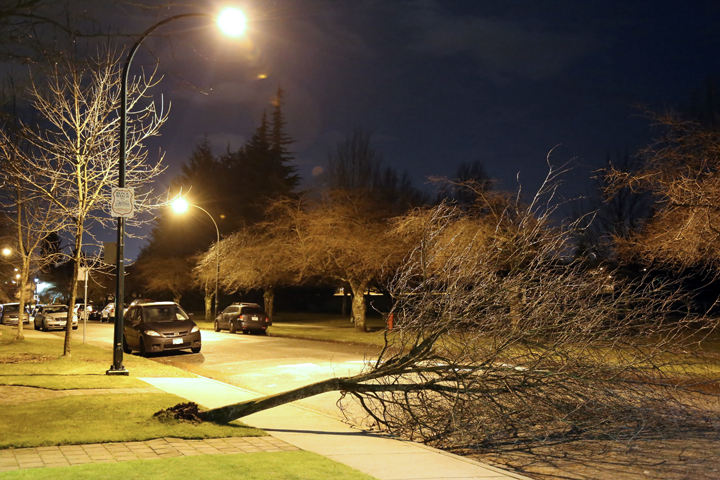Figure 1.1 above Peak gusts (mph and km/h) for the December 11, 2014 windstorm. Wind speeds are largely from long-term surface airways weather observation sites, data buoys, lighthouses and C-MAN stations, with limited data from other networks (e.g. RAWS). Stations with long histories are preferred because of the research focus on intercomparison of historic storms. Numbers preceded by a tilde (~) represents the highest gust report in a dataset that has been interrupted at the height of the storm--usually data loss is from power outages. Values in italics are gust values estimated from peak wind, typically 2-minute or 5-minute, using a 1.3 gust factor. Stations with high-wind criteria gusts (≥58 mph or 93 km/h) are denoted with white-filled circles. Isotachs depicting ≥60 mph (~100 km/h) gusts are included to highlight the regions that had concentrations of the indicated magnitudes. The track of the extratropical cyclone center is shown (yellow arrow). Click on the map to see a larger version. Here is a map listing the station names. |
Strong classic windstorms are rare. Since the January 16, 2000 tempest, nearly fifteen years passed before the next such storm visited the West Coast. The December 11, 2014 extratropical cyclone arrived during a very active period (2014 and 2015) that contained several high-wind events of note, including a somewhat similar storm on October 25, 2014 and an unusual summer windstorm on August 29, 2015, many of which followed meridional tracks that are the hallmark of classic windstorms. The December 11, 2014 windstorm brought peak gusts of 60-90 mph (95-145 km/h) to the coast of extreme northwest California and also southwest Oregon with a lower range of 55-65 mph (90-105 km/h) from northwest Oregon to the Olympic Peninsula of Washington (Figure 1.1). Over the interior sections, winds of 50-55 mph (80-90 km/h) struck the southern Willamette Valley. In sharp contrast, but also in a familiar pattern for classic-path windstorms, the northern Valley received much stronger 60-65 mph (95-105 km/h)--even higher--gusts. The southwest Washington interior and Puget Lowlands generally experienced lower winds than the northern Willamette Valley, another pattern that has often appeared with classic windstorms, with peaks generally in the range of 45-55 mph (70-90 km/h). North of this region, stretching into the southern Georgia Strait, wind gusts were again intense, around 60-70 mph (95-115 km/h). However, the inland areas of British Columbia's Lower Mainland, and much of the greater Victoria area had wind gusts similar to the Puget Lowlands. Due to heavy precipitation in California, including amid the San Francisco Bay Area, widespread urban flooding, some river flooding and mudslides occurred with numerous road closures (NCDC 2014). At some locations, homes were inundated by rapidly-rising waters. The roof of a grocery store in San Jose underwent partial collapse from the water load. Trees weakened or dead from prolonged drought toppled easily under lowland wind gusts of 40-55 mph (65-90 km/h), causing additional road closures and widespread power outages that affected hundreds of thousands of residents across northern California. In Oregon, one fatality and serious injury occurred in Portland Metro due to a tree falling on a car (Zarkhin 2014). Debris, fallen trees and downed wires blocked roads (Fernandez 2014). Siding torn from the Pacwest Center office tower crashed through some windows on the Standard Building, resulting in more street closures. Heavy winds forced the closure of the tram service, and Max light rail trains experienced delays due to power outages. Near the Lloyd Center, large pieces of material were blown off of a building under construction and tumbled down the street, smashing windows and causing terror among those caught in the spectacle (Paul Bonine, personal communication, November 17, 2015). Widespread downed trees caused numerous outages, especially in the northern Willamette Valley (NCDC 2014), with Portland General Electric reporting nearly 83,000 customers, or 9.8% of the customer base, out at peak (Cari P., PGE, personal communication, October 28, 2015). As stoplights darkened, traffic became snarled in places (Woolington 2014). Similar events repeated as the storm tracked northward. In Washington, approximately 246,000 customers without electrical service at the height of the storm (NCDC 2014). Many roads were closed by fallen trees and other debris. Windthrow struck a propane tank near a casino, causing a large fire. In southwest British Columbia at least 78,000 customers (BC Hydro 2014), or 5.5% of the customer base, lost power at the storm's peak, mainly the result of broken trees and branches. |


